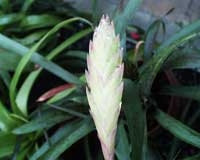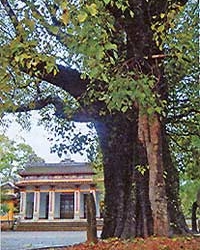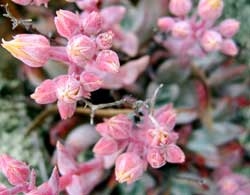Among approximately 370,000 species of plants on Earth, very few are attracted to the scent of blood. Yet, there is one species known for its ability to become carnivorous at certain times.
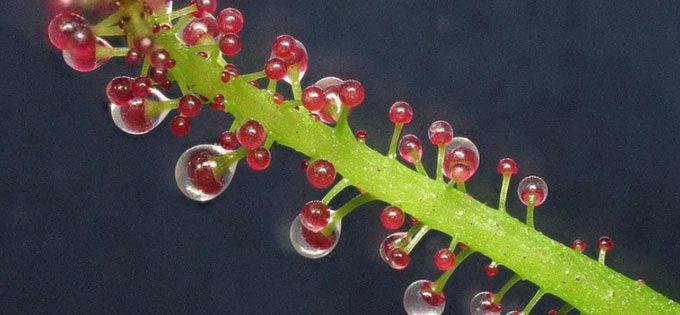
The leaves running along the branches of Triphyophyllum peltatum. (Photo: Traud Winkelmann/ University of Hannover).
Triphyophyllum peltatum is a rare plant species found in the tropical forests of Sierra Leone in West Africa. It not only survives by absorbing nutrients from the soil through its roots, but it also occasionally transforms into a carnivorous plant.
Researchers from Leibniz University Hannover and the University of Würzburg in Germany have recently discovered some fascinating new characteristics about the life of this unique carnivorous plant.
This climbing plant, also known as woody vines, may contain beneficial compounds for humans that help combat malaria and certain types of cancer. However, scientists are particularly interested in its unique feeding mechanism.
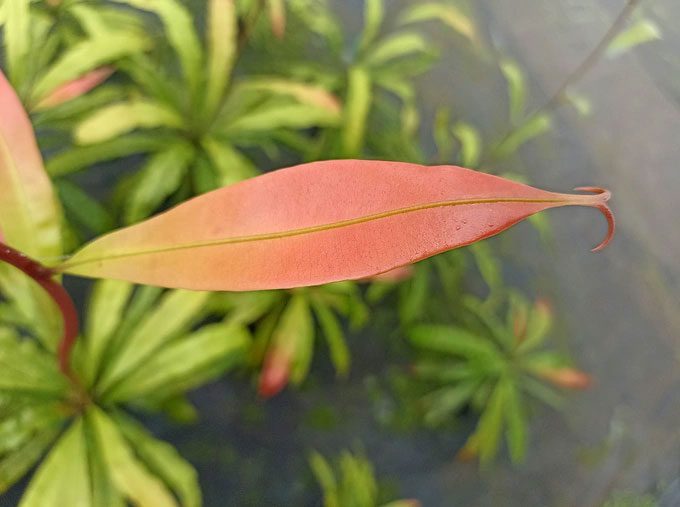
Two hooks at the tips of the leaves of Triphyophyllum peltatum. (Photo: Traud Winkelmann/ University of Hannover).
In its near-mature stage, the Triphyophyllum peltatum appears completely normal. It absorbs sunlight and generates energy through photosynthesis, showing no signs of trapping animal prey.
As it matures, it begins to spread its leaves, which have two hooks at the tips that help it climb up other sunlit canopies.
However, as it continues to develop, it also produces symmetrical leaves that secrete sticky, blood-colored droplets capable of trapping and consuming unsuspecting beetles. After satisfying its hunger, the plant can revert to being “docile” as usual.
Unlike other carnivorous plants such as the Venus flytrap, pitcher plant, bladderwort, and butterwort, the insect-eating behavior of Triphyophyllum peltatum is not a fixed habit throughout its entire development. Some Triphyophyllum peltatum plants never consume insects.
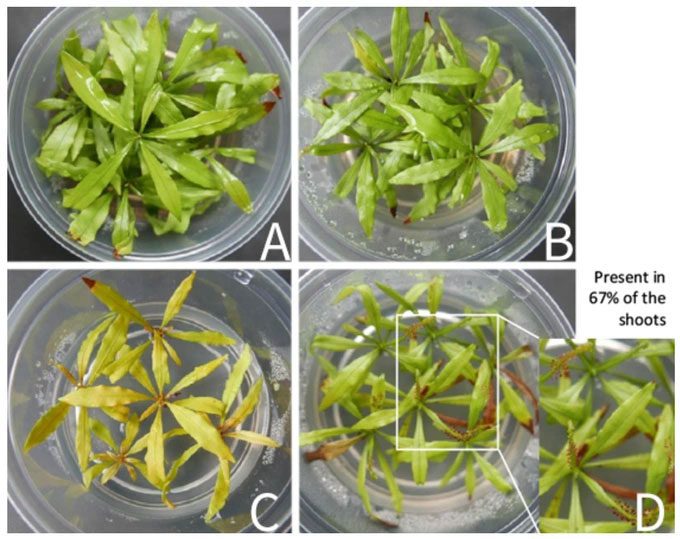
A) Triphyophyllum peltatum grown as a control. B) Triphyophyllum peltatum grown in nitrogen-deficient soil. C) Triphyophyllum peltatum grown in potassium-deficient soil. D) Triphyophyllum peltatum grown in phosphorus-deficient soil, producing insect-trapping leaf sprouts. (Photo: Hedrich/ New Phytologist 2023).
To explain this, scientists hypothesize that this plant behaves like similar carnivorous species, transforming into a carnivore to survive in nutrient-deficient environments, such as nitrogen deficiency.
However, to date, they have not been able to confirm what triggers this transformation in Triphyophyllum peltatum, as it is a challenging plant to cultivate, making research and study difficult.
To address this issue, the researchers first sought to cultivate Triphyophyllum peltatum from scratch.
Thanks to advancements in experimental techniques derived from previous studies on the plant, the research team successfully propagated and cultivated specimens at the Würzburg Botanical Garden in a laboratory in Hannover.
Sixty plant shoots were divided into two groups, with some planted in small plastic pots containing nitrogen, potassium, and phosphorus-deficient soil, while others were grown as control plants. They were regularly monitored weekly for six months to determine if they would become carnivorous.
The results showed that the plants producing elongated leaves with red speckles were those deficient in phosphorus. Subsequently, the researchers replicated these plants and cultivated them in a greenhouse with very low phosphorus content.
Phosphorus is a crucial mineral for plant development, as it is essential for creating the core components of DNA and cell membranes.
Plants utilize most of their energy to develop root systems to absorb phosphorus from the soil. By the end of the dry season, they may experience phosphorus deficiency. This is when Triphyophyllum peltatum typically produces leaves specifically adapted for capturing insects.
Becoming carnivorous requires a significant amount of energy as the plant needs to produce sticky resin and digestive enzymes to break down its captured prey.
Researchers indicate that when phosphorus levels are low, Triphyophyllum peltatum naturally shifts its focus to forming insect-trapping leaves to obtain phosphorus from the captured insects.
After accumulating the necessary phosphorus, the plant returns to focusing on developing its normal photosynthetic leaves.








































